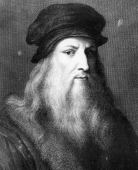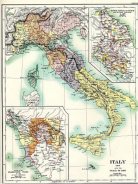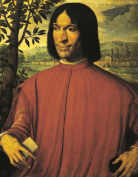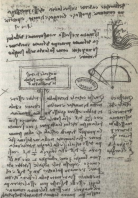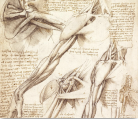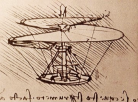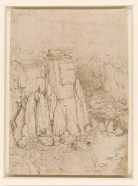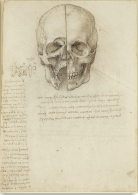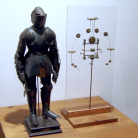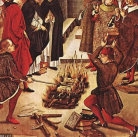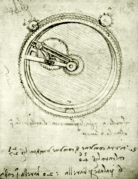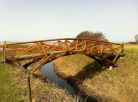Leonardo's Journey through Time
Created by Dino Franco Felluga on Sat, 10/03/2020 - 13:19
Part of Group:
 This timeline will explore the scientific and historical events of 1501-1600, concentrating on the scientific theories of Leonardo da Vinci.
This timeline will explore the scientific and historical events of 1501-1600, concentrating on the scientific theories of Leonardo da Vinci.
Timeline
Chronological table
| Date | Event | Created by | Associated Places | |
|---|---|---|---|---|
| 14 Apr 1452 |
Birth of Leonardo da VinciLeonardo da Vinchi was born in April 14, 1452. He had many skills but was especially talented in metal crafting, painting, and learning new skills quickly. He accomplished many things over his lifetime but he was especially known for his paintings and drawings. We have also now learned from his notebooks how many things he invented and scientific discoveries he found. |
Leonardo Allen-Felluga | ||
| 29 May 1453 |
Fall of ConstantinopleThe fall of Constantinople on May 29, 1453 ended the Byzantine empire and marked the end of 10 years of war. It was defeated by the Ottomon Turks. |
Leonardo Allen-Felluga | ||
| 9 Apr 1454 |
The Treaty of LodiThe Treaty of Lodi was signed on April 9, 1454. It was a treaty between Milan, Naples, Florence, and Venice. it ended the wars of Lombardy. creating peace in the region. |
Leonardo Allen-Felluga | ||
| 1469 |
Lorenzo de Medici comes to powerLorenzo de Medici came to power in Florence in 1469. while he was in power he was a patron to Leonardo da Vinci. He also made Florence known as the most beautiful city in Europe. |
Leonardo Allen-Felluga | ||
| circa. 1470 to circa. 1500 |
The telescopeLeonardo da Vinci made a design for what we now call the telescope and he also made a few discoveries with the telescope about astronomy but once we looked into it we saw that much of what he believed was incorrect. |
Leonardo Allen-Felluga | ||
| circa. 1472 |
AutopsyLeonardo da Vinci dissected his first body when he was 20 years old for science and art. He studied many things about the human body like how it moved with muscles and joints and the organs and lungs. |
Leonardo Allen-Felluga | ||
| circa. 1478 to circa. 1500 |
3 barreled cannonLeonardo da Vinci invented a 3 barreled cannon because it was easy to use and was more accurate because it shot in 3 directions not one. Also he made it because it's light so people can carry it not like a cannon where 3 people had to fire it. |
Leonardo Allen-Felluga | ||
| circa. 1478 to circa. 1480 |
thee self-propelled cartLeonardo da Vinci made a design of a self-propelled cart that moved on its own. What would happen is there is a cam a shaped piece of metal or wood and the cam rotates and turns the stearing wheel to turn the cart. |
Leonardo Allen-Felluga | ||
| circa. 1480 to circa. 1500 |
Discovering that the earth is not the center of the universeLeonardo da Vinci was so curious about the nature and life of the solar system that he researched it for a long time. In his notes he said that the earth is not the center of the univese though that's what people believed in back then. So Leonardo said the sun doesn't move; we move around it but people didn't believe him. |
Leonardo Allen-Felluga | ||
| circa. 1480 to circa. 1500 |
HelicopterLeonardo da Vinci made a design for the now called helicopter. He called it the Aerial Screw. He never built or tested the Aerial Screw after he made the design and it's probably a good thing he didn't because now, we would know that if we used all of the extremely heavy things he did, it wouldn't fly. |
Leonardo Allen-Felluga | ||
| circa. 1483 to circa. 1484 |
Leonardo da Vinci's geology workLeonardo da Vinci found out that the earth has been here for a very long time before humans. He knew this because he found shells and other things from the ocean at high places which he thought meant that the sea level must have been up there in the past. So he thought it would take a very long time to make the sea level go so much lower than back then. |
Leonardo Allen-Felluga | ||
| circa. 1483 |
The parachuteJean Pierre Blanchard made the first working parachute in 1783. Jacques Garnerin was able to make a successful descent with a parachute from 3,000 feet in 1797. Leonardo made the design of the parachute in 1483, approximately, and expected it to be improved. |
Leonardo Allen-Felluga | ||
| circa. 1483 to circa. 1486 |
The anemometerLeon Battista Alberti made the anemometer in 1450. The anemometer scales how much wind power there is. Leonardo da Vinci made another anemometer that is easier to use and more accurate with a peice of wood showing how much wind there is. |
Leonardo Allen-Felluga | ||
| circa. 1489 |
the human anatomyLeonardo da Vinci made an extremely accurate drawing of a human skull to see the skull and teeth and he also drew another showing a cavity in a tooth. How he got such an accurate drawing was he dissected multiple people and looked at their skull. |
Leonardo Allen-Felluga | ||
| circa. 1490 |
Discovery of sound wavesLeonardo da Vinci made a theory that sound moves in waves. Also it helped that he was a musician which helped him to identify sounds. |
Leonardo Allen-Felluga | ||
| 1492 |
Columbus discovers North AmericaAfter sailing across the Atlantic Ocean, Italian explorer Christopher Columbus sights a Bahamian island. He found North America and thought it was Asia. This was not good for Italy because the Eruopians then used North America to trade as well as Italy so Italy got less money and materials. |
Leonardo Allen-Felluga | ||
| circa. 1493 |
Pulley systemLeonardo da Vinci made a pulley system. It involved weight and friction to make it work. Leonardo da Vinci made the first systematic study of friction. |
Leonardo Allen-Felluga | ||
| 1494 |
the Italian warThe Italian Wars started in 1494 when the French attacked the Italians who had big walls but the French had better cannons which were faster to reload and easier to use. So they brought down Italy's walls very quickly. The Italians were not ready because they had outdated cannons so they didn't think that they would have so much better cannons then they did so they thought they had more time then they did. |
Leonardo Allen-Felluga | ||
| circa. 1495 |
The mechanical knightLeonardo da Vinci made a knight with springs or a waterwheel. the knight could stand, sit, raised it's visor, and lift it's arm. Now there has been a modern reconstruction made by Mark Rosheim. |
Leonardo Allen-Felluga | ||
| circa. 1497 |
Ball bearingLeonardo da Vinci made and used something called a ball bearing and it makes something be able to turn without friction so like a wheel has bearings or the top part of a tank that spins 360 degrees. Leonardo used these bearings for many of his inventions. Also ball bearings stop friction so for example a figit spinner it spins so well and for so long because of ball bearings. |
Leonardo Allen-Felluga | ||
| 7 Feb 1497 |
Bonfire of the VanitiesGirolamo Savonarola took over Florence and didn't like Lorenzo il Magnifico's work so all of Florence made a bonfire of paintings, cosmetics, art, and books and other objects. He wanted to turn back the clock on scientific development, among other things. |
Leonardo Allen-Felluga | ||
| 1 Feb 1499 |
The Venice clock towerThe Venice clock tower was one of the most complex mechanisms because it told the time, showed the phases of the moon and showed the constellations in the sky and also had robots (automata). Leonardo da Vinci was visiting Venice when the clock tower was unveiled. |
Leonardo Allen-Felluga | ||
| circa. 1500 |
ClocksLeonardo da Vinci didn't make the clock but improved the clock from what it was. He maade a clock with minutes and hours. Also he used springs instead of weights. |
Leonardo Allen-Felluga | ||
| circa. 1500 |
Scuba gearLeonardo da Vinci invented scuba gear but for attacking from the water not for under sea exploration which we now use scuba gear for. He also thought it would be a very effective way to sabotage enemy ships. |
Leonardo Allen-Felluga | ||
| circa. 1500 |
The Parabolic ArchLeonardo da Vinci made a design called the parabolic Arch or you could call a self sustaining bridge. We actually discovered the notes centuries later then built and tested the parabolic bridge. |
Leonardo Allen-Felluga |

